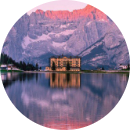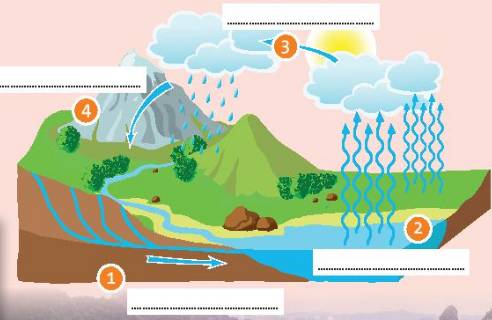Read and listen to the fact sheet again. Answer the questions.
1. What is true about the amount of water on Earth?
2. Why does water vapour condense?
3. What happens to a glass of water on a hot day?
4. Name two forms of precipitation. Do you know any more?
5. What are the three states that water can be in?
THE WATER CYCLE
Now here is a challenge for you. Go and get a glass of water and take a look at it. Can you guess how old it is? Well, your water perhaps fell from a cloud just a couple of weeks ago, but it has been around for the same length of time as planet Earth! That means that your glass of water was around when the first creatures swam in the sea and when the dinosaurs roamed the Earth. But how is this possible?
The fact is that the quantity of water on the Earth remains the same over time and it constantly goes through the water cycle. In the cycle, there is continuous movement of water on, above and below the surface of the Earth. Firstly, the sun heats the water in the rivers, seas and oceans, and it evaporates into the air. Plants and trees lose water, too, and this also goes up into the air. The water vapour then cools and condenses into small drops which form clouds. You can see how condensation happens if you look again at your glass of water on a hot day. After a short time, water from the air condenses onto the cold glass. Back to the sky, though, and the next step is that the clouds gradually get heavier and heavier until they can’t hold the water any more, and it falls to Earth as rain, sleet or snow.
Water can change state from liquid to vapour to solid during the cycle, but any form of water that falls from the clouds is called precipitation. When on Earth, some of the water runs into rivers, lakes and streams and becomes surface water. Some enters the ground and forms underground rivers or lakes before eventually flowing back to the seas and oceans. The cycle is complete.
1. The amount of water on Earth doesn’t change over time.
2. Water vapour condenses when it cools.
3. After a short time, water from the air condenses onto the cold glass.
4. Name two forms of precipitation: rain, snow. I know some other types of precipitates which are: hail, ice crystal and drizzle.
5. The three states that water can be in are: solid (ice), liquid (water), gas (steam / vapour).





